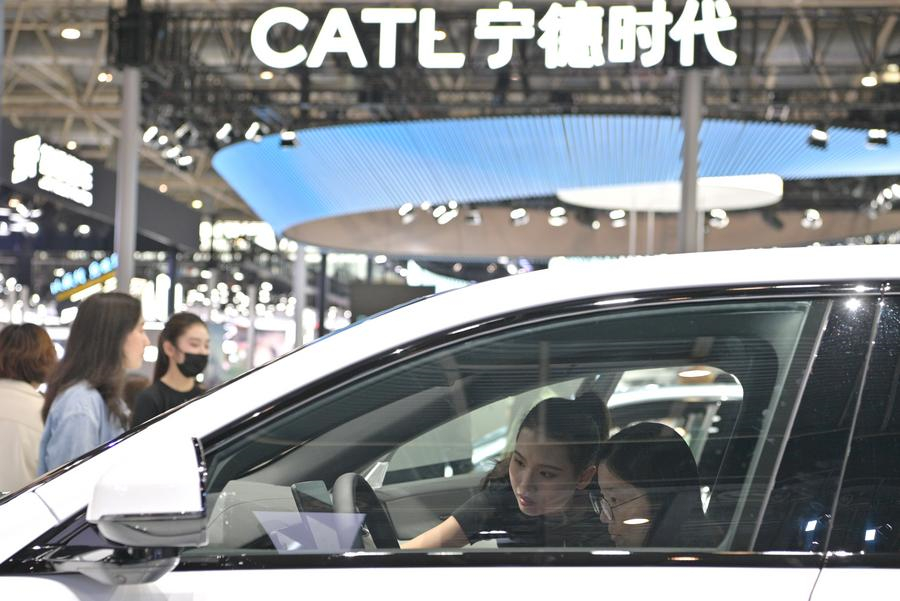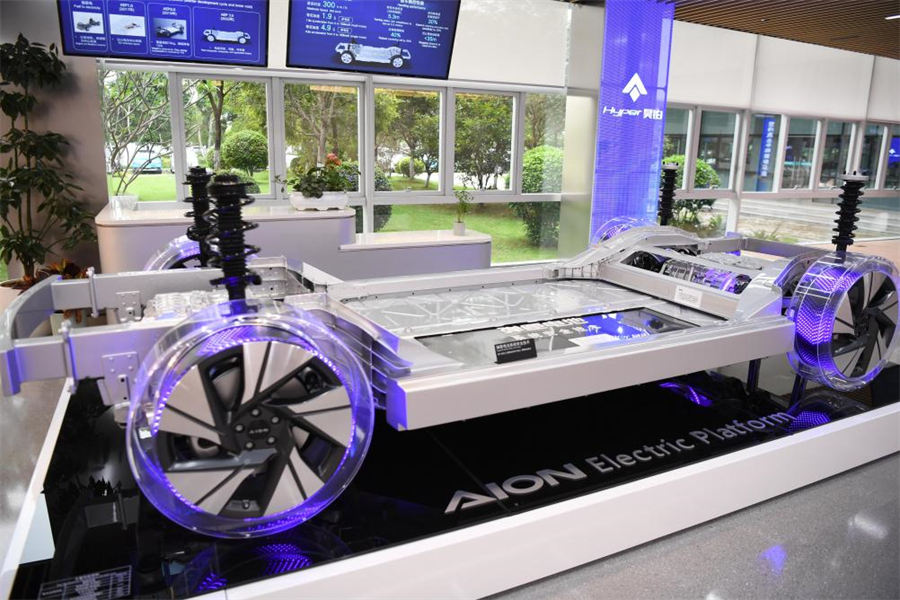The power source of China's new energy industry

A visitor (R) studies a new energy vehicle during the 2024 Beijing International Automotive Exhibition in Beijing, capital of China, May 4, 2024. [Xinhua/Yin Dongxun]
China will continue to bolster global industry by embracing innovation and fostering win-win outcomes while infusing vitality into the world economy.
by Xinhua writer Gao Wencheng
BEIJING -- The 2024 Beijing International Automotive Exhibition was a spectacle with 117 global premieres and 278 new energy vehicle models, drawing crowds of traders, both domestic and international. These lively scenes vividly depict the robust growth of China's new energy sector, igniting global curiosity about its unprecedented ascent.
In 2023, both production and sales of China's new energy vehicles (NEV) exceeded 9 million units, maintaining its position as the global leader for nine consecutive years. Exports of new energy vehicles soared by 77.6 percent, reaching 1.203 million units and solidifying China's position as a key driver of the global automotive industry's green transformation. Collectively, exports of China's "new trio," electric vehicles, lithium batteries and photovoltaic products surpassed 1.06 trillion yuan (146.5 billion U.S. dollars) last year.
China's rise as a global leader in emerging industries stems from its strategic foresight and unwavering commitment to green development.
As China swiftly devised a national strategy for new energy vehicles, Chinese automakers pursued diverse technological pathways by following policy guidance, including pure electric, hybrid and hydrogen fuel, cementing their position at the forefront of innovation.
In the NEV era, Chinese firms have become vital technology providers for global collaborations, attracting international automakers to this year's Beijing auto show looking to catch up to surging China EV makers, as noted by Reuters.
In addition to policies guiding development direction, China's well-established supporting system has made many foreign enterprises envious. For instance, China's swift action in building charging stations and upgrading infrastructure has far outpaced its Western counterparts, with coverage rates exceeding 80 percent in downtown areas of major cities.
Meanwhile, China's ascendancy in emerging industries is underpinned by a mature industrial chain, robust supporting capabilities and abundant skilled labor.
China is the only country worldwide boasting industries covering every category in the UN industrial classification and hosting over 200 mature industry clusters. China's manufacturing industry has been the largest in the world for 14 consecutive years.
This robust industrial foundation has enabled collaborative efforts across the supply chain and driven the success of the new energy industries. Additionally, China's transition from demographic to knowledge dividends has provided crucial talent support, further contributing to its success.
China's momentum in emerging industries also derives from fostering technological breakthroughs and innovative business models through intense market competition.

This photo taken on April 24, 2024 shows an electric platform model of GAC Aion New Energy Automobile Co., Ltd. in Guangzhou, south China's Guangdong Province. [Xinhua/Deng Hua]
China's NEV sector has not only propelled the transformation of traditional automotive companies but has also fostered the emergence of numerous new players. Moreover, the entry of giants like Tesla into the Chinese market has ignited multidimensional competition, leading to the development of high-tech, consumer-centric products that benefit consumers worldwide.
Similarly, manufacturers like CATL and BYD have thrived amid fierce competition in the power battery sector, while international companies like LG Energy Solution have ramped up production capacity in China. This efficient market mechanism and healthy competition ecosystem have injected vitality into China's rapid industrial development.
China's emerging industries have garnered comparative advantages on a global scale, a result of market competition and selection guided by market economy principles. In stark contrast to recent unfounded allegations of overcapacity, the primary drivers of China's emerging industries are not subsidies but rather innovation, cooperation and competition.
Facts are the most effective rebuttal amid an onslaught of smear campaigns. China will continue to bolster global industry by embracing innovation and fostering win-win outcomes while infusing vitality into the world economy.
The views don't necessarily reflect those of Qiushi Journal.
























